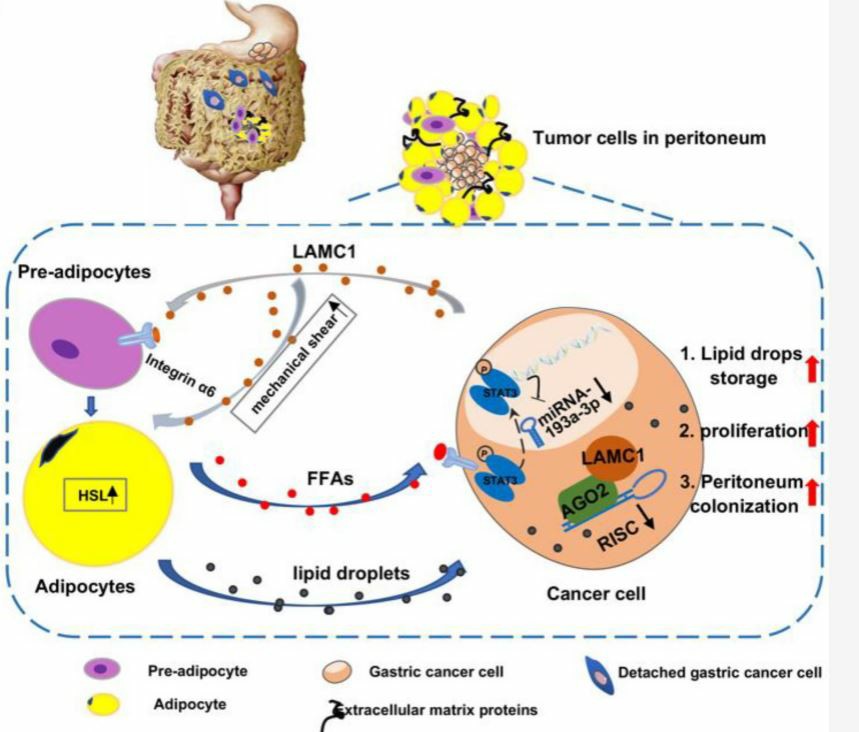LAMC1 and Associated Diseases
Since its inception, Creative Biolabs has focused on preclinical research in the biomedical field by providing high-quality customized services for life science research and drug discovery. Our goal is to provide high-quality customized solutions at affordable prices to researchers worldwide and become a truly valuable partner in the field of life science research and drug discovery.
Backgrounds of LAMC1
The Laminin gamma 1 (LAMC1) gene is a large gene spanning 122 Kb and containing 28 coding exons, which encodes the gamma-1 chain of laminin, an extracellular matrix protein belonging to a family of laminins and involving in the assembly of basement membranes and various progresses including the growth and metastasis of tumors. The LAMC1 chain is the most widely expressed laminin chain, which mainly exists in the basal membrane. It is involved in a variety of biological and pathological processes, including tissue development, tumor cell invasion, and metastasis. A member of the laminin family, LAMC1 acts as an oncogene involved in a variety of tumor phenotypes, including cell adhesion, differentiation, signal transduction, and metastasis.
Functions of LAMC1
Some studies have shown that LAMC1 promotes metastasis and maybe a new therapeutic target for the treatment of human cancers. Moreover, LAMC1 is involved in many carcinogenic effects within tumor cells and also promotes the Warburg effect in hepatocellular carcinoma by upregulating PKM2. LAMC1 may also be involved in the regulation of fat formation. It promotes the transformation of non-functional preadipocytes into adipocytes with adipokine and fatty acid secretion capacity by binding to integrin α6 on the preadipocyte membrane. In addition, LAMC1 is associated with ECM remodeling and increased tissue hardness. LAMC1 fragments in serum and urine reflect accelerated remodeling of glomeruli and tubular basement membranes, as well as other organs, and serve as a surrogate marker for persistent fibrosis.
LAMC1 and Associated Diseases
LAMC1 overexpression has been reported to be correlated with poor prognosis of hepatocellular carcinoma and meningioma. Upregulation of LAMC1 in meningiomas correlates with shorter times to tumor recurrence and decreased progression-free survival. High serum LAMC1 expression indicates a high risk of peritoneal metastasis. LAMC1 expression is upregulated in uterine carcinoma and significantly correlated with FIGO staging, myometrial invasion, cervical/adnexal involvement, vascular lymphatic invasion, and lymph node metastasis. Silencing of the LAMC1 gene can significantly inhibit the migration and invasion of cancer cells. The lack of LAMC1 gene expression induces apoptosis in Schwann cells, which has been attributed to reduced phosphatidyl-inositol 3-kinase activity and the activation of caspase cascades. In addition, in mouse models, LAMC1 deletion results in lamin γ1 chain deletion, resulting in abnormal basal layer formation and embryo death by preventing entire laminin polymerization.
 Fig.1 The mechanism diagram of LAMC1-mediated preadipocyte differentiation promoted peritoneum pre-metastatic niche formation and gastric cancer metastasis. (Fang, 2022)
Fig.1 The mechanism diagram of LAMC1-mediated preadipocyte differentiation promoted peritoneum pre-metastatic niche formation and gastric cancer metastasis. (Fang, 2022)
At Creative Biolabs, we believe in teamwork and quality performance. Our core mission is to provide our clients with the highest quality research services at highly competitive prices and to support our products with 100% customer satisfaction. You can count on our high-quality support to meet your research needs. You can start contacting us now for more information.
Reference
- Fang, Y.; et al. LAMC1-mediated preadipocyte differentiation promoted peritoneum pre-metastatic niche formation and gastric cancer metastasis. International journal of biological sciences. 2022, 18(7): 3082. Distributed under Open Access license CC BY 4.0, without modification.
